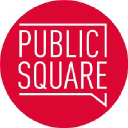Ferret: Refer and Ground Anything Anywhere at Any Granularity
We introduce Ferret, a new Multimodal Large Language Model (MLLM) capable of understanding spatial referring of any shape or granularity within an image and accurately grounding open-vocabulary descriptions. To unify referring and grounding in the LLM paradigm, Ferret employs a novel and powerful hybrid region representation that integrates discrete coordinates and continuous features jointly to represent a region in the image. To extract the continuous features of versatile regions, we propose a spatial-aware visual sampler, adept at handling varying sparsity across different shapes. Consequently, Ferret can accept diverse region inputs, such as points, bounding boxes, and free-form shapes. To bolster the desired capability of Ferret, we curate GRIT, a comprehensive refer-and-ground instruction tuning dataset including 1.1M samples that contain rich hierarchical spatial knowledge, with 95K hard negative data to promote model robustness. The resulting model not only achieves superior performance in classical referring and grounding tasks, but also greatly outperforms existing MLLMs in region-based and localization-demanded multimodal chatting. Our evaluations also reveal a significantly improved capability of describing image details and a remarkable alleviation in object hallucination. Code and data will be available at https://github.com/apple/ml-ferret



